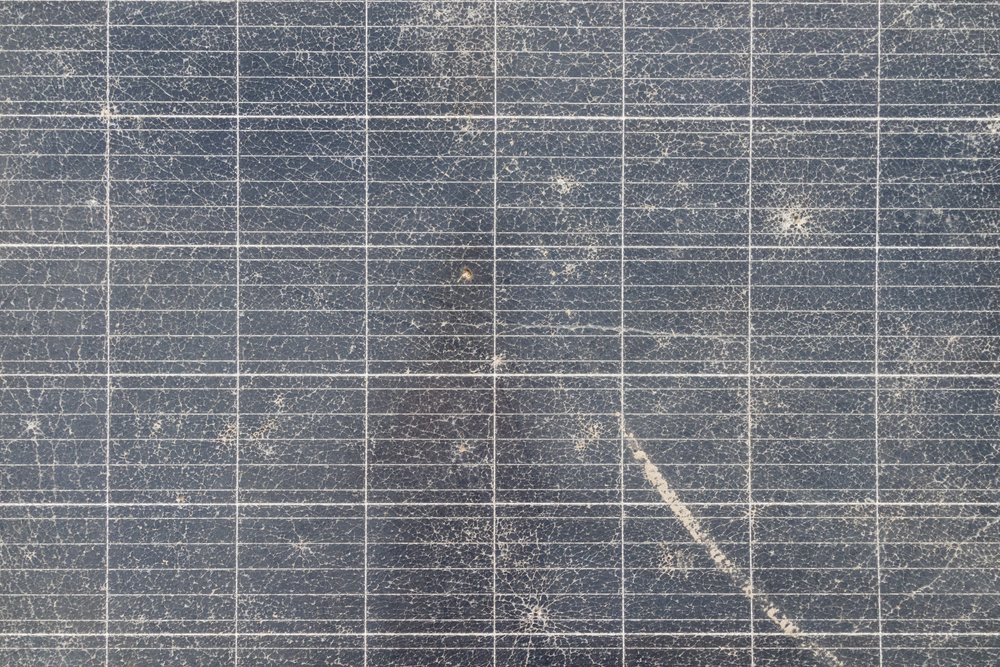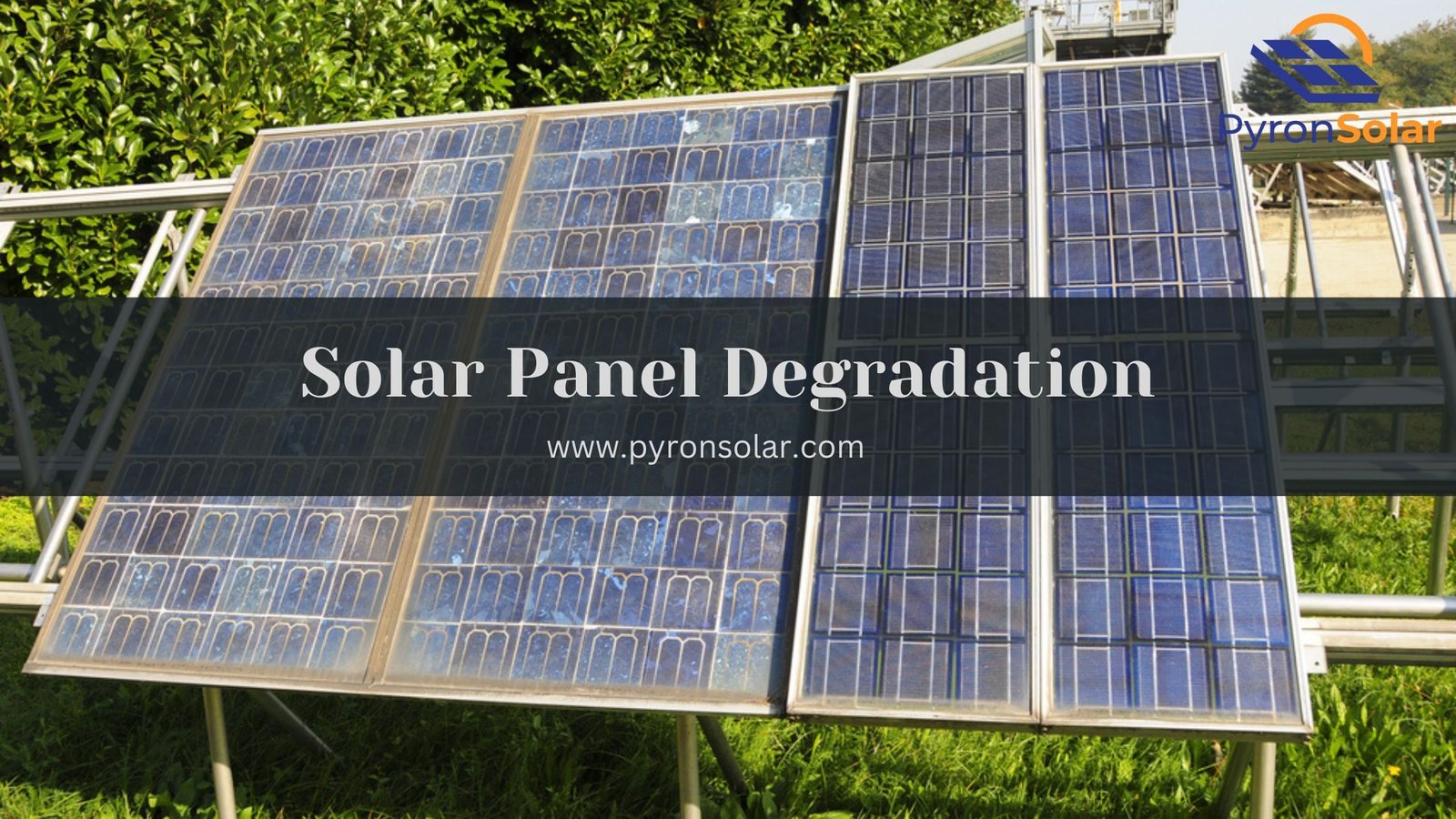Solar panels, commonly referred to as PV panels, are a technology that transforms solar light into electricity to generate power; like other electronics, has a finite life.
Solar panel degradation refers to the gradual decline in the performance and efficiency of solar panels over time. This natural process occurs due to various factors such as exposure to UV rays, weather conditions, and thermal cycling. On average, solar panels degrade at a rate of about 0.5% to 1% per year, meaning they lose a small fraction of their ability to convert sunlight into electricity annually.
Solar panels are often exceedingly dependable and trouble-free as they have no moving parts and only need cleaning. Solar panels can, however, malfunction or perform inadequately due to faulty components or subpar manufacturing practices, just like any other manufactured product.

As there are so few solar panels placed for long enough to be adequately examined, the life expectancy of solar panels is typically a tricky topic to analyze. Nonetheless, manufacturers typically provide a warranty with their solar panel offerings, and you can check before deciding for yourself. However, in this article, I aim to provide an in-depth analysis of what solar panel degradation is, its causes, and how to prevent it, along with how you can calculate an estimated degradation rate.
Systems with higher-grade solar panels degrade more slowly than systems with lower-grade panels. Consequently, it is essential to consider this while comparing solar panels because spending more money on higher-quality panels could be more advantageous. So it is important to know how to choose best solar panel for you.
Understanding solar panel degradation helps homeowners and businesses make informed decisions about long-term energy production and maintenance.
What is Solar Panel degradation?
Solar photovoltaic (PV) cells typically degrade slightly over time and may have a limited number of manufacturing flaws. Due to high temperatures and a natural decline in chemical potency within the panel, solar panel systems gradually lose their capacity to absorb sunlight and convert it into solar energy. This gradual decrease in solar panel output is referred to as solar panel degradation.
Climate, module type, and racking system, among other things, affect the solar panel life and their ability to produce electricity over time. Defects are frequently linked to the ongoing quest for cost savings, thus it should come as no surprise that cheaper panels typically have more issues than those from well-known luxury solar firms.
{Video Credit: The Solar Energy Channel by Paradise Energy}
What Causes Degradation in a Solar Panel?
Solar panels primarily deteriorate with time, exposure to UV radiation, and unfavorable weather due to normal wear and tear. The performance warranty for a panel includes the rate of deterioration.
In warmer locations and on rooftop systems, increasing deterioration rates are probably caused by higher temperatures. Due to insufficient airflow under the panels, rooftop systems frequently experience greater ambient temperatures than ground-mounted systems. High temperatures can significantly impact electronic performance, which reduces PV performance.
The panel’s exposure to light can result in several types of mechanical and chemical deterioration, including:
Deterioration induced by light (LID):
Interaction between the panel’s crystalline silicon cells and the environment outside. LID may last a few days or longer.
Direct light-induced degradation (DLID):
During the early setup phase, direct sunlight exposure can cause the photovoltaic cells’ circuitry to buckle or distort due to the heat. DLID may persist for several hours.
UV-induced deterioration (UVID):
The panel’s efficiency is decreased due to forming of a layer of boron dioxide on the surface of the panel’s crystalline silicon oxide after initial exposure to sunlight.
Deterioration due to age:
Solar panels deteriorate over time due to their constant exposure to the elements. High temperatures, snowfall, ice, and rain all contribute to cell contamination, frame corrosion, and hardening of the crystalline silicon. Microcracks in the panel’s surface can also be brought on by hail, ice, dust, and sand, and if the panel’s seal is compromised, water may seep in.
Potential-induced deterioration (PID):
PID, unlike LID, does not necessarily affect every solar panel but can occur if various parts, such as the frame and photovoltaic cells, operate at various voltages. The quantity of electricity the panel can transfer to the inverter is reduced due to voltage leakage brought on by this disruption.
What is the life of a Solar Panel?
There are no specific end dates for a solar panel’s useful life. Modules, however, are normally covered by warranties for 20 to 25 years, beyond which time they may still be able to produce electricity. Still, the volume of that electricity cannot be guaranteed. After 25 years, one solar project owner might opt to repower or decommission it, while another might decide to leave it in place and allow it to continue producing electricity, albeit at a reduced rate.
According to a study, solar panels degrade at a median rate of 0.5% annually; however, the rate may be higher in hotter areas and for rooftop installations. A solar panel’s output will drop by 0.5% per year if the degradation rate is 0.5%. Thus, the module produces almost 90% as much electricity in year 20 as in year 1. Additionally, the warranty ensures that your panels will continue functioning at at least 80% of their peak output rate after 20 to 25 years (depending on the panels or manufacturer). This indicates that they anticipate an efficiency decline of at most 1% yearly.
How to calculate the degradation rate of Solar Panels?
It’s critical to comprehend what the concept of degradation rate entails. The solar industry employs this phrase to describe a decrease in the nameplate power of solar modules.
As a first step, I’ll ask you to compare the actual output of the PV plant with several project KPIs (on-site irradiation, solar resource variability, project availability, Force Majeure events, temperature, etc.) and manufacturer specifications or professional advice. It is feasible to evaluate the performance and deterioration of the complete PV plant over its active years by analyzing all the metrics collectively.
Afterwards, any performance issues can be further looked into. Panel degradation may be one of the underlying causes, which can be verified by on-site measurements or laboratory testing. Only when the initial performance analysis has been completed can the nature and scope of the investigation be decided.
Factors that Determine Rate of degradation
Certain factors determine the rate at which solar panels degrade:
Better quality runs longer:
If the materials and parts used in the panel are of poor quality, the solar glass, aluminium frame, and solar cells can all break. Some manufacturers utilize less aluminum in the frame to keep costs down, although thinner frames are more prone to damage. Reducing the costs here leads to an increased expenditure when the panels break down and have to be exchanged.
How the Panels are assembled:
Even with top-notch components, a panel’s longevity might be impacted by how it is put together because not all materials are compatible. In case of incompatible materials or components affecting the oxidation or voltage leak rate, it would lead to the acceleration of LID or PID.
Uptight maintenance:
Although solar panels require little upkeep, it’s important to keep an eye on them to clear away any dust or debris accumulation that can reduce the amount of electricity they produce. Also, ensure no loose or damaged connections, cables, or inverters by routinely inspecting them.
Favorable Weather Conditions:
Severe weather conditions like heat waves, hurricanes, and snowstorms impact how quickly things deteriorate with age. Extreme temperature variations can cause the components to expand and compress, leading to cracks and other types of damage. At the same time, significant snowfall can exert pressure on the surface, especially if the snow freezes, leading to fissures. Hurricanes may result in falling debris that harms the panel surface.
Handling during Installation:
The panels must be handled and stored properly before and during installation to prevent damage. During installation, microcracks, scratches, and faulty electrical connections impact the panel’s performance.
To maximize the benefits of self-cleaning and mechanical resistance, the installer must also ensure the panels are mounted on the roof at the ideal angle and clamping.
{Video Credit- Off-Grid Garage}
What can be done to extend the life of Solar Panels?
Summarizing what I have previously said, a sure-shot solution would be to purchase High-quality solar panels, ensure proper installation, and ensure routine maintenance can all prevent degradation and maintain solar panels’ maximum efficiency for the duration of their useful lives.
The most crucial is to prevent any physical harm to the panels’ surface—greater rates of efficiency deterioration result from more scratches.
The key is routine maintenance of solar panels. Your solar panel’s efficiency will remain higher as a result. Try to devise a plan to protect the panels from harsh weather conditions.
Nonetheless, it could be a good idea first to see how your supplier can assist before moving forward with the maintenance on your own. While many provide free maintenance, professional guidance is always beneficial, even when that is different, especially when it involves a solar panel investment of such magnitude.
Factors to look out for when buying a Solar Panel:-
Its efficiency:
The ability of a solar panel to convert sunlight into usable electricity is indicated by the panel’s efficiency rating. Given the same quantity of sunlight shining for the same amount of time, a panel with a higher efficiency rating will produce more power than a panel with a lower efficiency rating.
Warranty offered:
Solar panel warranties differ depending on the manufacturer and product. Before installing a solar panel manufacturer’s product on your roof, remember to read over their warranty policy.
Design:
Solar panels come in various looks, and knowing which resonates with you is also an essential deciding criterion. It can be a thoughtful consideration if your roof has visibility from the outside.
Conclusion
Solar power is an example of how we can smartly and sustainably use the resources available to us. Thus, to further add to its goodwill, a solar panel and its parts are still in use, even after its degradation. That means the panels are still worthwhile even after reaching the end of their useful lives as power generators.
Recycling allows for the extraction of useful parts and raw materials for the manufacture of new solar panels or usage in other industries, as opposed to disposing of used solar panels in landfills. This not only gives a complete cycle to a solar panel system but also reduces your burden of disposal and even provides you a few bucks for giving up recycling.
So bear those factors in mind if you still need to place solar panels on your house. You’ll likely require expert advice to discover the product that best meets your needs. If you’re ready to start your solar journey, research and familiarise yourself with solar energy and the price to install solar panels.
Ray is an avid reader and writer with over 25 years of experience serving various domestic and multinational private and public energy companies in the USA.

